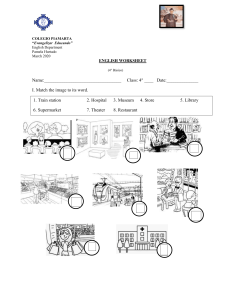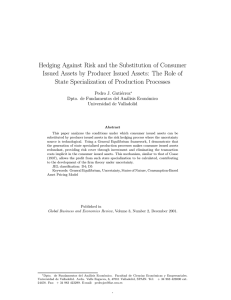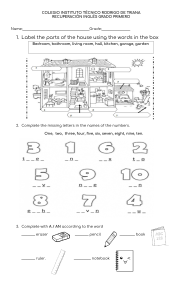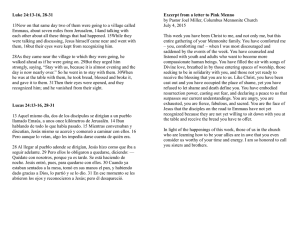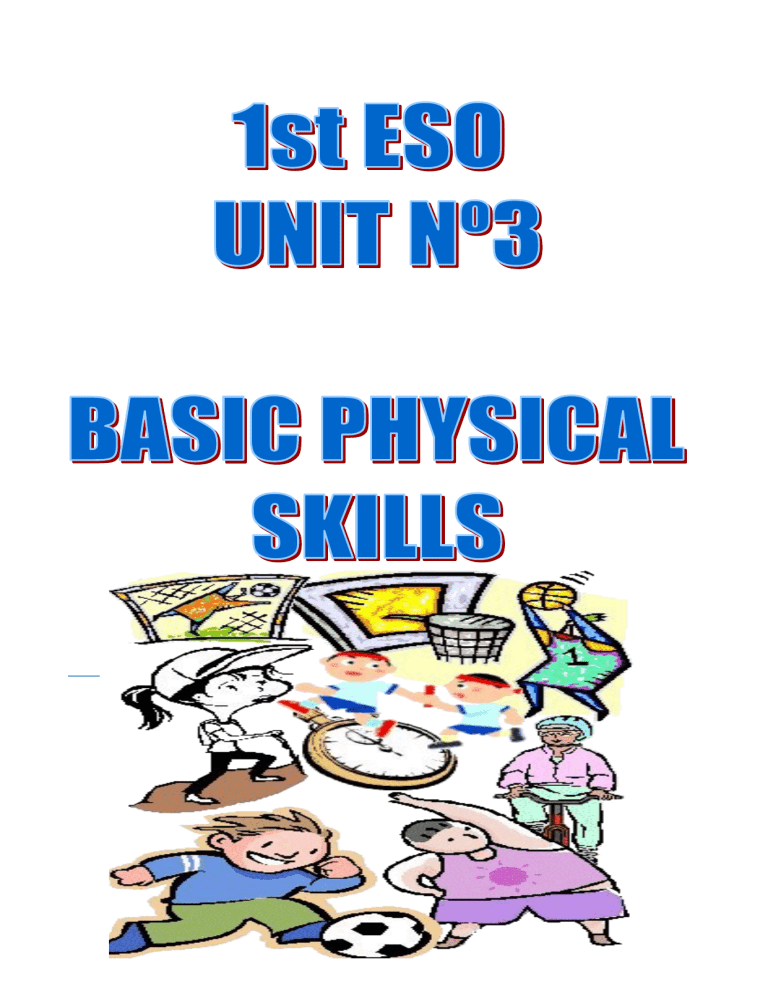
Colegio Sagrada Familia – Hijas de Jesús Valladolid Department of Physical Education 1st ESO Unit 3: Basic Physical Skills BASIC PHYSICAL SKILLS 1. – INTRODUCTION. Esto esta en el cuaderno Everyone has a number of physical skills which enable them to perform different movements both in everyday and during their sporting activities. These skills are responsible for human movement and every individual has a different degree of development of their skill. The state of each of these skills is what is referred to as physical fitness. Physical fitness is determined by physical skills which vary depending on the age of the person and the type and amount of physical exercises they perform. 2. –BASIC PHYSICAL SKILLS. Basic Physical Skills are essential components of physical fitness since physical performance can be improved through their training. Esto esta en el cuaderno 2.1 STRENGTH is the ability that enables us to overcome resistance or oppose muscle tension. From the perspective of training, strength can be classified into three different types according to the way it is manifested: + MAXIMAL STRENGTH, it is the ability of the muscles to develop maximum potential tension to perform activity using the greatest possible strength. This is the kind of strength used in weightlifting or wrestling. Jorge Nicolás de Blas Barriuso -2- Colegio Sagrada Familia – Hijas de Jesús Valladolid Department of Physical Education 1st ESO Unit 3: Basic Physical Skills + SPEED STRENGTH, it stablishes a relationship between strength and speed. It is the ability of the muscles to perform movements that require strength at the highest possible speed. This kind of strength is used in sports gestures such as a serve in tennis, penalty in handball…. STAMINA STRENGTH, it establishes a relationship between strength and stamina. It is the ability of the muscles to perform movements that require strength for a long period of time. Neither the load nor the speed are great so many repetitions can be made. + This type of strength is needed for physical activities that require long and continuous effort, such as middle distance running in athletics, skiing, cycling… 2.2 ENDURANCE is the skill used to perform efforts during the longest possible time, withstand the state of progressive fatigue caused by the efforts and recover from them quickly. From the point of view of training, endurance can be classified in two different types: + AEROBIC ENDURANCE, it is when the oxygen supply is sufficient to meet the needs of our body. It is the kind of endurance for sports like marathon, swimming, cycling… + ANAEROBIC ENDURANCE, it is when the supply of oxygen is insufficient to meet the needs of our body. This happens when the intensity of exercise increases. It is the kind of endurance for sports like sprinting, long jump… Endurance is a skill that can undergo rapid decline if you do not train, but if you work at it regularly, it increases in a short period of time. Jorge Nicolás de Blas Barriuso -3- Colegio Sagrada Familia – Hijas de Jesús Valladolid Department of Physical Education 1st ESO Unit 3: Basic Physical Skills 2.3 SPEED is defined as the ability to perform motor actions in the shortest possible time. It is a skill that depends heavily on the central nervous system and for its quick development training should start and a early age. In sports, speed is usually classified into three types: + REACTION RATE, it is the ability to respond in the shortest possible time after the stimulus. This is seen , for example, in a response of a goalkeeper, a starting gun… It is possible to measure the reaction time. + GESTURE RATE is the ability to perform rapid movement with part of the body, for example, backhand with racket in tennis, batting in baseball or a spike in volleyball. + MOVEMENT RATE, it is the ability to cover a short distance in the shortest possible time, such as, a 100m race or running to win a base in baseball. 2.4 FLEXIBILITY is defined as the ability of a given joint or a group of joints to perform movements with maximum range of motion. Flexibility is determined by joint mobility and muscle elasticity. Flexibility is essential in many activities that require large joint movements such as taekwondo, gymnastics… 3. –EVOLUTION OF BASIC PHYSICAL SKILLS WITH AGE. The physical condition of each person varies throughout their life because physical skills are not static or permanent. They vary and undergo changes with age. Each physical skill evolves according to its own characteristics: Jorge Nicolás de Blas Barriuso -4- Colegio Sagrada Familia – Hijas de Jesús Valladolid Department of Physical Education 1st ESO Unit 3: Basic Physical Skills -5- Jorge Nicolás de Blas Barriuso Colegio Sagrada Familia – Hijas de Jesús Valladolid Department of Physical Education 1st ESO Unit 3: Basic Physical Skills 4. –MOTOR SKILLS. -6- Motor skills depend on the central nervous system. They are determined by the ability of part of the various receptors of movement (optical, acoustic, tactile and kinesthetic) to respond to stimuli from the environment and develop the information sent by them. 4.1 COORDINATION it can be defined as the organization and control of any movement of the body towards the performance of a given gesture, through precise synchronization of the different body segments. The precise synchronization of movement of the different parts of the body in space and time enables athletes to adjust to these body movements and perform technical, concrete gestures that they are thinking about. Coordination can be divided into: + GENERAL DYNAMIC COORDINATION, it affects ample movements involving a joint action of many body parts. In many cases, it involves locomotion activities. + SEGMENTAL COORDINATION, it concerns the relationship between the sense of sight and any of the body segments. In many cases it involves the handling or control of objects. Depending on the body segment, it is divided into: + Eye hand coordination, it relates the eyes with the hands. It covers all the different types of movements: bounces, hitting, driving, throwing, passes, catches… + Eye foot coordination, it relates the eyes with the feet. It covers all the different types of movements: bounces, hitting, driving, throwing, passes, catches… + Dynamic hand coordination, it relates the eyes to the movement of two hands in a synchronized way. Jorge Nicolás de Blas Barriuso Colegio Sagrada Familia – Hijas de Jesús Valladolid Department of Physical Education 1st ESO Unit 3: Basic Physical Skills 4.1 BALANCE it can be defined as the ability of human beings to keep the body in a stable position against gravity both in state situations and in movement. Balance is essential in all sporting activities and crucial in those that include acrobatic movements, unexpected changes and accelerations and sudden changes in position. Balance is manifested in two ways: + STATIC BALANCE, when the body is maintained in a particular position without moving from the centre of gravity which falls within the area delimited by the base of support. + DYNAMIC BALANCE, when the body is maintained in a stable position despite the continuous shift of the body´s centre of gravity. The movement is the result of the succession of controlled imbalances. Jorge Nicolás de Blas Barriuso -7-
